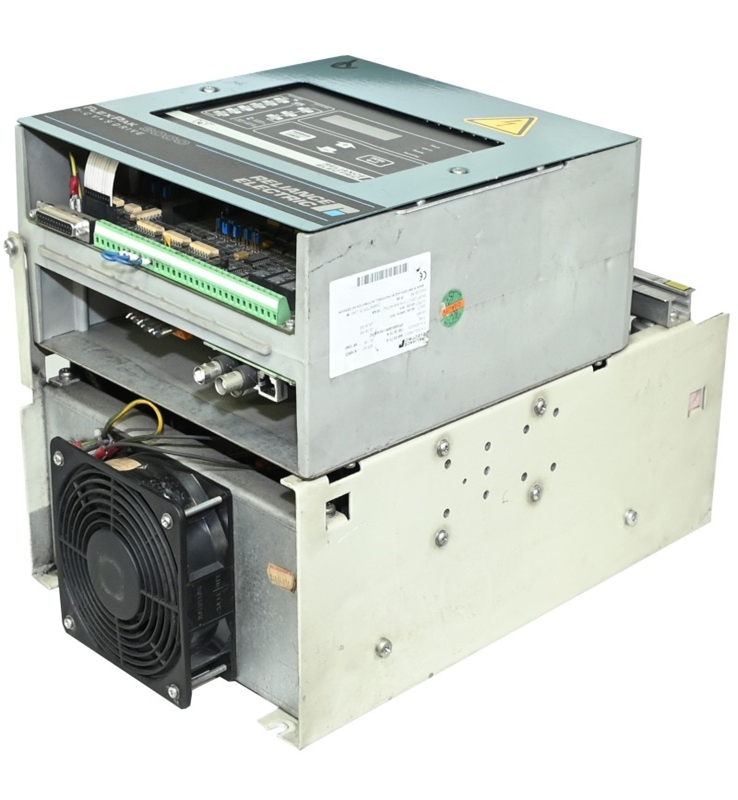Reliance 0-58706-16-B Communication Processor
Brand:RELIANCE Model number:0-58706-16-B
Country of origin: United States Product weight:0.55kg
HS code:9032899099
Product Details:
Product Dimensions:
A Reliance Communication Processor is a specialized module designed to offload communication tasks from the main PLC or control system processor. Its primary function is to manage data exchange between the control system and various external devices, networks, or host computers. This allows the main processor to focus on executing the control logic, improving system performance and scan times.
Functionality: These modules handle specific communication protocols and physical interfaces. They transmit and receive data, perform error checking, and often manage the timing and sequencing of communication. They act as a gateway, translating data between the internal format of the control system and the external network protocols.
Architecture: Early models might have been based on microprocessors like the Motorola 68000 series (e.g., 68010, 68020) or Intel 80186, featuring dedicated RAM and ROM for their operating system and communication buffers.
Types: Reliance offered various communication processors, including:
Serial Communication Processors: Supporting common serial protocols like RS-232, RS-485, and potentially 20mA current loop for point-to-point or multi-drop communication.
Network Interface Modules: For connecting to proprietary industrial networks (e.g., Reliance's R-Net) or early open networks.
Host Computer Interfaces: Designed specifically to facilitate communication with supervisory control and data acquisition (SCADA) systems or other host computers for data logging, alarming, and remote control.
Key Features:
Dedicated Processing Power: Reduces the load on the main PLC CPU.
Multiple Communication Channels: Often includes several independent serial ports or network connections.
Protocol Support: Built-in support for various industrial communication protocols.
Data Buffering: Internal memory for temporarily storing transmitted and received data.
Electrical Isolation: Protects the control system from electrical noise and surges on communication lines.
Diagnostic Indicators: LEDs to show communication status, errors, and activity.
Software Configurable Parameters: Baud rate, parity, data bits, network addresses, etc., could be set via software.
Specific parameters depend on the module model and generation:
Processor Type: (e.g., Motorola 68010, Intel 80186) and clock speed (e.g., 8 MHz, 200 MHz).
Memory: On-board RAM and ROM for firmware and data buffering (e.g., 32KB, 128KB RAM; 64KB ROM).
Communication Interfaces: (e.g., RS-232, RS-485, 20mA current loop, Coaxial connectors for R-Net, Ethernet in later models).
Number of Channels/Ports: (e.g., 1, 2, or 3 serial channels).
Baud Rates: Supported data transmission speeds (e.g., from 300 bps up to 19.2 Kbps or higher).
Supported Protocols: (e.g., Modbus RTU, R-Net, ASCII, proprietary Reliance protocols).
Voltage: Operating voltage (e.g., 5V DC, 24V DC supplied by the backplane).
Power Consumption: (e.g., 5W typical).
Operating Temperature: Industrial temperature ranges (e.g., -20°C to +60°C or -40°C to 85°C).
Mounting Type: Typically plugs into a backplane within a PLC chassis.
Improved System Performance: By offloading communication tasks, the main processor is freed up, leading to faster scan times for control logic and overall improved system responsiveness.
Enhanced Connectivity: Enables the control system to communicate with a wide array of intelligent devices, remote I/O, other PLCs, and higher-level IT systems.
Reduced Wiring Complexity: Centralizes communication connections, simplifying field wiring.
Reliability: Designed for robust operation in industrial environments, with features like electrical isolation protecting the integrity of the control system.
Diagnostic Capabilities: On-board diagnostics and status indicators assist in troubleshooting communication issues, reducing downtime.
Flexibility: Allowed for custom communication routines (e.g., using Enhanced BASIC or ladder logic with communication blocks) for non-standard devices.
Protocol Compatibility: Ensure the communication processor supports the exact protocols and variations required by the devices it needs to communicate with.
Network Topology: Understand the limitations and requirements of the supported network topology (e.g., multi-drop, peer-to-peer).
Configuration Software: Specific software tools are required to configure the communication parameters of the module.
Cabling and Terminations: Use correct shielded cabling and termination resistors as per the protocol specifications to ensure reliable communication and prevent noise interference.
Security: For networked communication, especially in modern contexts, cybersecurity considerations are paramount. Older modules may lack advanced security features.
Obsolescence: As Reliance Electric product lines have evolved under ABB/Baldor, availability of new modules may be limited, and users might rely on aftermarket suppliers or repairs. Compatibility with modern operating systems and software can also be a challenge.
Reliance Communication Processors were vital for integrating control systems into larger automated environments:
Factory Automation:
Connecting PLCs to barcode readers, vision systems, or robotic controllers.
Enabling peer-to-peer communication between multiple PLCs on a production line.
Process Control:
Interfacing with smart field devices like intelligent sensors or valve positioners that communicate via serial protocols.
Sending process data to distributed control systems (DCS) or supervisory control systems (SCADA).
Data Acquisition:
Collecting production data, machine status, and alarm information from multiple PLCs to a central database or historian.
Communicating with host computers for recipe management or batch control.
Remote Monitoring and Control:
Enabling remote access to PLC data for diagnostics or operational adjustments.
Connecting to modems for remote alarm notification or data retrieval in distributed applications.

We have the same series of models in stock. If you don't find the model you need, please contact us and we will provide you with an official quotation!
RELIANCE ELECTRIC 0-58706-16-B
RELIANCE ELECTRIC 0-58706-17
RELIANCE ELECTRIC 0-58706-19
RELIANCE ELECTRIC 0-58718
RELIANCE ELECTRIC 0-58719
RELIANCE ELECTRIC 0-58719-31-A
RELIANCE ELECTRIC 0-58770-202AC
RELIANCE ELECTRIC 0-58770-300
RELIANCE ELECTRIC 0-58770-310
RELIANCE ELECTRIC 0-58770-411
Colour:new Warranty: 12 months
Lead Time:3-day working day Price: Please contact us
Shipping Port: Xiamen, China Payment:T/T
Express cooperation: fedex, DHL, UPS and your express account
Service: Professional Sales provides 24 hours /7 days online service
Our service:

Fast delivery, and can be used with your express account.

Competitive Price

Free Shipping

One-year warranty